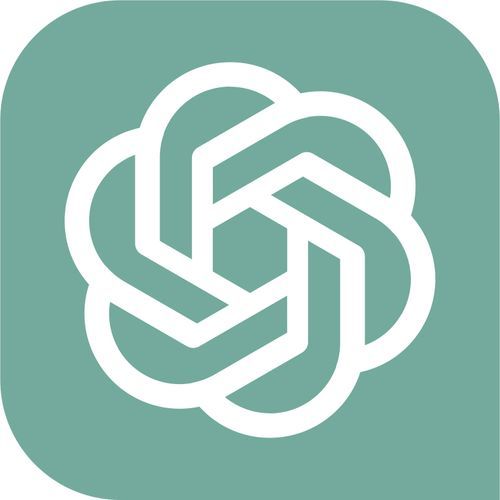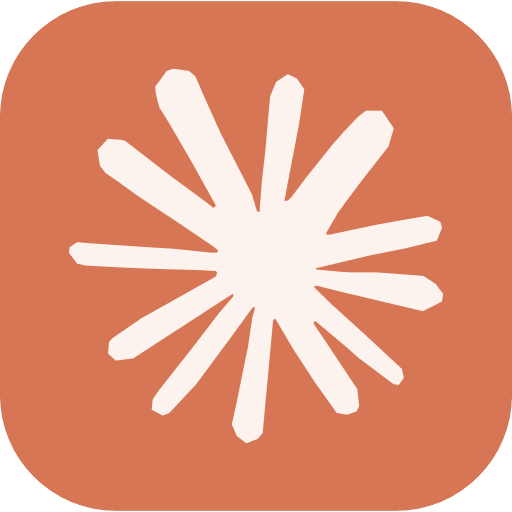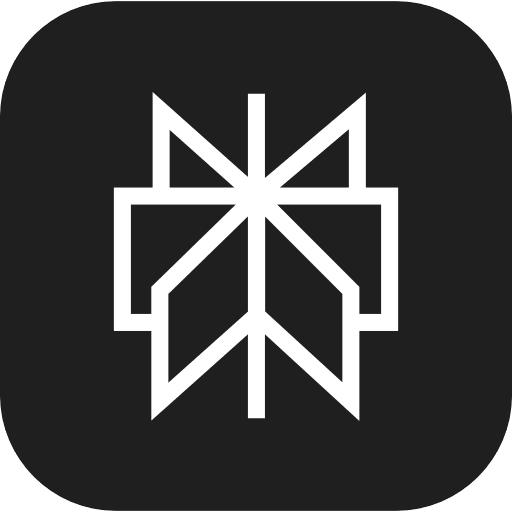Library of teambuilding games & icebreakers


Collaborative Art
Divide the team into small groups and provide each group with art supplies. Assign a theme or topic and ask the groups to create a collaborative artwork together.
Collaborative Art
How to play:
Divide the team into small groups and provide each group with art supplies. Assign a theme or topic and ask the groups to create a collaborative artwork together.
Materials needed: Art supplies (paper, paints, brushes, etc.)
Benefits:
- Masterpieces fueled by teamwork: Prepare to be dazzled by the artistic symphony that unfolds before your eyes. Each stroke of the brush and every imaginative idea blends together like a symphony, resulting in a collaborative artwork that's a testament to the creative genius lurking within your team.
Gallery



Video


Sound effects
This game seems a little childish at first, but it usually leads to a ton of laughs. It’s the perfect game for leaving egos at the door - chances are everyone will feel equally silly. Why not let your walls down and just goof off for a while? You’re sure to feel closer to your coworkers afterward.
Sound effects
This game seems a little childish at first, but it usually leads to a ton of laughs. It’s the perfect game for leaving egos at the door - chances are everyone will feel equally silly. Why not let your walls down and just goof off for a while? You’re sure to feel closer to your coworkers afterward.
To begin:
- Have the group stand in a circle, and have one person stand in the center. The circle should be wide enough that the person in the center can freely spin around, and people can move fairly freely.
- The person in the circle should spin around a few times with their finger pointed out. When they stop, the person they are pointed at is “up”.
- The person in the center asks that person to make a particular noise - for example, a lion, or a car that won’t start. Chances are the sound won’t be that accurate, and the more outlandish, the funnier the game gets.
- Then the person who was just “up” moves to the middle and does the same. They will spin, point to someone, and come up with a silly noise for them to make. This goes on until everyone has had a turn.
Gallery



Video


Coffee talk sessions
Coffee talk sessions offer a simple, relaxing break in the day. Teams hop on a virtual call for 15 minutes, grab a coffee (or tea), and chat about anything but work. It’s the virtual water cooler chat you didn’t know you needed.This is an easy way to stay connected, share stories, and unwind—especially when everyone’s remote and missing those casual office moments.
Coffee talk sessions
Coffee talk sessions offer a simple, relaxing break in the day. Teams hop on a virtual call for 15 minutes, grab a coffee (or tea), and chat about anything but work. It’s the virtual water cooler chat you didn’t know you needed.
This is an easy way to stay connected, share stories, and unwind—especially when everyone’s remote and missing those casual office moments.
How to play:
- Set up a 15-minute virtual coffee break.
- Join the call with your favorite drink and talk about anything non-work-related.
- Enjoy a casual chat and a little break from the day!
Gallery



Video


Bingo blitz
Bingo blitz turns your workday into a game by creating Bingo cards filled with everyday office tasks or events—like “send an email,” “have a meeting,” or “drink a coffee.” As these things happen, players mark off their Bingo cards. First person to get a full row or column wins!It’s a simple, fun way to make the office day a little more engaging and adds a bit of light competition to the regular routine.
Bingo blitz
Bingo blitz turns your workday into a game by creating Bingo cards filled with everyday office tasks or events—like “send an email,” “have a meeting,” or “drink a coffee.” As these things happen, players mark off their Bingo cards. First person to get a full row or column wins!
It’s a simple, fun way to make the office day a little more engaging and adds a bit of light competition to the regular routine.
How to play:
- Create Bingo cards with common office tasks or events.
- Players mark off tasks as they happen during the workday.
- The first person to get a full row or column shouts "Bingo!" and wins!
Gallery



Video


Drama-freeze
Best for small groups, this option can be really interesting. You start with pairs of two and a supervisor. The first team will act out a spontaneous scene without discussing it beforehand. While they do so, the supervisor of the game calls out “freeze” (any time they want). At that time the acting team must remain still. Then the next team of two begins and will start upon the supervisor saying “action”. They need to come up with a scene entirely different from the one from the pair before them. This will go on until each team gets a turn to act and freeze.
Drama-freeze
How to play Drama-freeze
Best for small groups, this option can be really interesting. You start with pairs of two and a supervisor. The first team will act out a spontaneous scene without discussing it beforehand. While they do so, the supervisor of the game calls out “freeze” (any time they want). At that time the acting team must remain still. Then the next team of two begins and will start upon the supervisor saying “action”. They need to come up with a scene entirely different from the one from the pair before them. This will go on until each team gets a turn to act and freeze.
Gallery



Video


Recall quiz (at the end of an event)
How about a little icebreaker to wrap things up? Most icebreakers are at the beginning, but with longer events, we suggest interspersing them throughout - including the end. Have everyone go around the room and share their biggest takeaway from the day. Or, have a list of quiz-style questions that you ask everyone and see who can remember the most answers. Recall is an important part of memory, so this is a great time to reiterate the concepts that you really want people to take away.
Recall quiz (at the end of an event)
How to play Recall quiz (at the end of an event)
How about a little icebreaker to wrap things up? Most icebreakers are at the beginning, but with longer events, we suggest interspersing them throughout - including the end. Have everyone go around the room and share their biggest takeaway from the day. Or, have a list of quiz-style questions that you ask everyone and see who can remember the most answers. Recall is an important part of memory, so this is a great time to reiterate the concepts that you really want people to take away.
Gallery



Video


Back-to-back sketch
In back-to-back sketch, one person describes an image while their partner, sitting back-to-back with them, draws it based solely on the description. No peeking allowed! It’s a great way to test communication skills—and usually leads to some very entertaining (and often unrecognizable) drawings.This game encourages clear instructions and active listening, with plenty of laughs thrown in.
Back-to-back sketch
In back-to-back sketch, one person describes an image while their partner, sitting back-to-back with them, draws it based solely on the description. No peeking allowed! It’s a great way to test communication skills—and usually leads to some very entertaining (and often unrecognizable) drawings.
This game encourages clear instructions and active listening, with plenty of laughs thrown in.
How to play:
- Pair up teammates to sit back-to-back.
- One person describes an image while the other draws based on the description.
- Compare the final drawings with the original image for some laughs!
Gallery



Video


Capture the flag
In this fast-paced game, players try to steal flags from each other's territories. The game is helpful for strategic thinking and promotes togetherness. You’ll need two to four teams with between 4-8 players. Each team should spend a few minutes creating their flag, and then find an open space where the teams can each hide their flag and have everyone attempt to come steal their flag.
Capture the flag
How to play Capture the flag
In this fast-paced game, players try to steal flags from each other's territories. The game is helpful for strategic thinking and promotes togetherness. You’ll need two to four teams with between 4-8 players. Each team should spend a few minutes creating their flag, and then find an open space where the teams can each hide their flag and have everyone attempt to come steal their flag.
Gallery



Video


Pay it forward
This game is an interactive outdoor activity perfect for a company retreat. If you’re taking the whole team to Paris for a city getaway to boost morale, Pay it Forward is the perfect game that helps you get to know your surroundings and encourages team members to collaborate.
Pay it forward
This game is an interactive outdoor activity perfect for a company retreat. If you’re taking the whole team to Paris for a city getaway to boost morale, Pay it Forward is the perfect game that helps you get to know your surroundings and encourages team members to collaborate.
How to play:
Split your workers into small teams, not more than ten a group. Each group will be given a small recording device or asked to designate one player as the videographer. Teams will be given an envelope that contains tasks. Each task is worth a certain number of points.
Each team is sent out into its surroundings, ideally a place where there are plenty of people to perform random acts of kindness for strangers. These random acts are found in the envelope given to your team at the beginning of the game. The person recording is documenting each task completed.
Examples of tasks could include:
- Paying for a strangers coffee at a cafe
- Telling someone they look great today
- Offering a small shopkeeper to help take out the trash
Once teams return to the home base, they tally up their points based on the number of tasks they completed.
Materials you’ll need: You’ll need plenty of space for your team to roam around, like a village or city center. A small recording divide like a GoPro or personal cellphone.
How many people: Small to large groups (8 to 20+ people)
Gallery



Video


Top ten things
In this quick and easy exercise, you simply go around the (virtual) room and have everyone list the first ten words that come to mind based on a prompt. You can pick really straightforward subjects or get more creative. For example, if the topic is “Top vacation destinations”, have each person list their top ten places they’d like to visit. Or, maybe you ask for top ten names for a new puppy, or the ten worst date night destinations.
Top ten things
How to play Top ten things
In this quick and easy exercise, you simply go around the (virtual) room and have everyone list the first ten words that come to mind based on a prompt. You can pick really straightforward subjects or get more creative. For example, if the topic is “Top vacation destinations”, have each person list their top ten places they’d like to visit. Or, maybe you ask for top ten names for a new puppy, or the ten worst date night destinations.
Gallery



Video


Paper chain power
Paper chain power is a fast-paced, hands-on activity where teams race to create the longest paper chain in just three minutes. The catch? Each person can only use one hand! It’s all about coordination, quick thinking, and maybe a little friendly chaos.This game is perfect for breaking up the workday and injecting some fun competition into the office.
Paper chain power
Paper chain power is a fast-paced, hands-on activity where teams race to create the longest paper chain in just three minutes. The catch? Each person can only use one hand! It’s all about coordination, quick thinking, and maybe a little friendly chaos.
This game is perfect for breaking up the workday and injecting some fun competition into the office.
How to play:
- Split into teams and provide paper, scissors, and tape.
- Each player can only use one hand to build the chain.
- The team with the longest paper chain after three minutes wins!
Gallery



Video


Got your finger
5-minute energizers don’t get much better than this one. Got Your Finger is fun, fast-paced, suitable for groups of all sizes, and sure to lift the mood. Oh, and it requires no prior planning or preparation either.
Got your finger
5-minute energizers don’t get much better than this one. Got Your Finger is fun, fast-paced, suitable for groups of all sizes, and sure to lift the mood. Oh, and it requires no prior planning or preparation either.
Here’s how to play:
Ask the team to stand in a circle, close together, and face inward. Next, tell each participant to stick their right hand out with their palms facing the ceiling. They then have to put their left index finger on the open palm of whoever’s standing to their left.
Now the fun can start! When you shout “Go”, each participant must try to close their hand around their partner’s finger before they escape. It’s multi-tasking at its finest – trying to stop the colleague to your left from catching your finger, while simultaneously trying to grab whoever’s on the right.
Gallery



Video


Remember when
Here’s another awesome improv game that hones team collaboration through group interaction and shared contribution. This time, though, it involves storytelling.Have you ever reminisced about a past event with a close friend or family member? Feels good, right? It sparks nostalgia, puts a smile on your face, and solidifies your bond with whoever you’re talking to in the process.Remember When takes that idea and puts a new spin on it…
Remember when
Here’s another awesome improv game that hones team collaboration through group interaction and shared contribution. This time, though, it involves storytelling.
Have you ever reminisced about a past event with a close friend or family member? Feels good, right? It sparks nostalgia, puts a smile on your face, and solidifies your bond with whoever you’re talking to in the process.
Remember When takes that idea and puts a new spin on it…
How to play Remember when
Sitting as a team, you go around the group “remembering” an event that you’re actually making up on the spot! Begin the game by introducing a make-believe memory that the team experienced together. For instance, “Remember when we went to see the Super Bowl together?”
Each person then adds another detail, creating a story of your time together as you go. The more creative, random, or outrageous the details, the better! Taking left turns and adding funny nuances to the “memory” helps bring out people’s personalities, sparks giggles, and brings the team closer together.
Want to add a twist to this improv game? Why not make a rule that you have to keep a straight face throughout it? If you smile, laugh, or even chortle to yourself – whether you’re adding the detail or hearing someone else’s – then you’re out!
As you’d expect, adding this competitive element invites employees to say funnier and more outrageous things in a bid to up the ante and make their colleagues giggle. It should also lead to greater engagement and a more enjoyable experience overall.
Gallery



Video


Shrinking vessel
Remember that game from childhood, “the floor is lava”? The one where you had to make it around the room without touching the floor. Good times. Shrinking vessel is somewhat similar, except you are working with a team. Strategy and Tetris skills will help me excel at this exercise.
Shrinking vessel
Remember that game from childhood, “the floor is lava”? The one where you had to make it around the room without touching the floor. Good times. Shrinking vessel is somewhat similar, except you are working with a team. Strategy and Tetris skills will help me excel at this exercise.
How to play:
Mark the boundaries of the areas where team members will be placed. Slowly, the edges of the borders are moved and made smaller, and team members must work together to ensure they don’t fall outside the lines. They cannot step out of the line.
Materials you’ll need: Anything temporarily marks the floor, like a string or tape, even a blanket, will do. Enough space to fit a small team of 4-5 people at a time is also needed.
How many people: Mid-size to large teams
Gallery



Video


Writing Marathon
Set a time limit and challenge team members to write a short story, poem, or piece of creative writing within that timeframe. Encourage them to unleash their imagination and explore different genres or styles.
Writing Marathon
How to play:
Set a time limit and challenge team members to write a short story, poem, or piece of creative writing within that timeframe. Encourage them to unleash their imagination and explore different genres or styles.
Materials needed: Paper, pens, or laptops
Benefits:
- Strengthened bonds through storytelling: Gather 'round and share the written masterpieces. Through storytelling, your team members connect on a deeper level, their narratives intertwining and creating a tapestry of shared experiences. Like a literary campfire, this activity kindles a sense of unity and camaraderie that'll keep the creative flames burning bright.
Gallery



Video


Yes, let’s
“Yes, Let’s” is a classic improv game that’s taken straight out of drama class. We like it for a host of reasons! However, one of its main draws in the context of boosting collaboration is that it involves everyone who is present.Unlike other activities of this nature, the focus is never on a single person – which is ideal for anyone who doesn’t like being the center of attention.
Yes, let’s
“Yes, Let’s” is a classic improv game that’s taken straight out of drama class. We like it for a host of reasons! However, one of its main draws in the context of boosting collaboration is that it involves everyone who is present.
Unlike other activities of this nature, the focus is never on a single person – which is ideal for anyone who doesn’t like being the center of attention.
Here’s how to play:
In a large open space, ask everyone present to start walking around the room. Next, shout out a suggestion for something the group should do.
For example, you could yell, “let’s go swimming in an ice-cold lake”, “let’s ski down this mountain”, or “let’s crawl on our bellies through this minefield.” It can be anything you want, but the game works best when it involves movement.
Whatever you suggest, the group has to respond enthusiastically by yelling back, “yes, let’s!” Everyone then does the action in question, moving around the room “swimming”, “skiing”, or “crawling”. After a while, someone else shouts out another action (“let’s cook a feast for our Viking guests”), and the process repeats.
Hilarity ensues as colleagues look around at their teammates doing all manner of crazy movements and mimes! Expect to energize the room, laugh until your belly hurts, and remember the joy of playing.
Furthermore, you’ll reaffirm a key element of collaboration: that there’s no such thing as a bad idea. Creative problem-solving demands a culture of acceptance, where people feel confident about raising their hand to offer a suggestion. “Yes, Let’s” normalizes unexpected ideas, rewards engagement, and stops people from feeling self-conscious. You’re sure to reap the rewards in the office.
Gallery



Video


Treasure hunt
Similar to a scavenger hunt, a treasure hunt is a lot of fun but with a bit more intention. Rather than collecting a random list of items, participants use clues to find more prompts and hints, until the group solves a mystery (or finds a treasure). You can also create a treasure map if you want to play into the “pirate” fantasy a little more. The important thing is that only clues point toward the next stop - areas of the map should not be spelled out, but involve some problem solving and critical thinking to figure out what the clue means.
Treasure hunt
How to play Treasure hunt
Similar to a scavenger hunt, a treasure hunt is a lot of fun but with a bit more intention. Rather than collecting a random list of items, participants use clues to find more prompts and hints, until the group solves a mystery (or finds a treasure). You can also create a treasure map if you want to play into the “pirate” fantasy a little more. The important thing is that only clues point toward the next stop - areas of the map should not be spelled out, but involve some problem solving and critical thinking to figure out what the clue means.
Gallery



Video


The personal Kanban game
Taking the principles of Kanban we learned earlier, now is a great time to make a personal version that prioritizes focus and streamlines workloads. Kanban boards are usually used for team projects but work just as well for a single person. This activity reinforces the Kanban concept: tracking work in stages to keep workflow steady.
The personal Kanban game
Taking the principles of Kanban we learned earlier, now is a great time to make a personal version that prioritizes focus and streamlines workloads. Kanban boards are usually used for team projects but work just as well for a single person. This activity reinforces the Kanban concept: tracking work in stages to keep workflow steady.
Set up:
Each person needs a basic Kanban board, either on a physical whiteboard or on their computer. Each board needs three columns, just keep it basic for the first version. Try “To Do,” “In Progress,” and “Done.” Get them to write every task for that day or week onto a sticky note (electronic ones are available too) and move each one slowly onto the board. Encourage them to keep a holistic view, so as not to overload the “in progress” section. Simple activities like this can help staff who may feel overloaded. Ask everyone to reflect afterward on how their tasks are managed, and record the insights.
Gallery



Video


Life swap day
Team members switch roles for the day—the accountant becomes the designer, the manager takes on the IT role, and everyone gets to try something totally different. It’s all about experiencing a new side of office life.In the hybrid version, both in-office and remote employees swap roles, but the twist is they’ll shadow their swapped roles virtually if they’re in a different location. Remote workers can sit in on video calls or collaborate on shared tasks, while in-office workers can hop on a call to learn about the ins and outs of a remote teammate’s role. The key is to walk a mile in someone else’s shoes, even if it’s virtually. It’s a fun way to gain empathy for each other’s daily challenges and maybe even discover hidden talents along the way.
Life swap day
Explanation:
Team members switch roles for the day—the accountant becomes the designer, the manager takes on the IT role, and everyone gets to try something totally different. It’s all about experiencing a new side of office life.
In the hybrid version, both in-office and remote employees swap roles, but the twist is they’ll shadow their swapped roles virtually if they’re in a different location. Remote workers can sit in on video calls or collaborate on shared tasks, while in-office workers can hop on a call to learn about the ins and outs of a remote teammate’s role. The key is to walk a mile in someone else’s shoes, even if it’s virtually.
It’s a fun way to gain empathy for each other’s daily challenges and maybe even discover hidden talents along the way.
Gallery



Video


Office FM
Office FM is an ongoing team-building activity that boosts morale and encourages employees to collaborate.
Office FM
Office FM is an ongoing team-building activity that boosts morale and encourages employees to collaborate.
Great for: Company culture
Duration: N/A
You’ll need: Access to a music streaming service (Apple Music, Spotify, etc.)
How to organise:
- Create a collaborative playlist and invite everybody as a contributor. If you like, you can create a theme such as “90s Party Classics”.
- Ask each employee to contribute a maximum of two songs to the playlist.
- Hit “play” on the playlist whenever a morale boost is needed!
Gallery



Video


The rhyming game
This game is designed to get your team’s creative juices flowing and encourage them to think on the spot.The idea is really simple. Each person takes it in turns to make a sentence. Each sentence needs to rhyme with the previous one. For example, “John woke up and went to work” … “It was his last day so he gave a smirk...” And so on.
The rhyming game
This game is designed to get your team’s creative juices flowing and encourage them to think on the spot.
How to play the rhyming game
The idea is really simple. Each person takes it in turns to make a sentence. Each sentence needs to rhyme with the previous one. For example, “John woke up and went to work” … “It was his last day so he gave a smirk...” And so on.
Set a rough time limit for each person to say their sentence (we recommend three seconds). If they are too slow they lose the game and are out for the next round. Then a new story begins. If a rhyme is said twice then that person is also out of the game.
The game continues until two people are left for the ‘final showdown’.
Gallery



Video


Pop explosion
Another game that’s best for outside! If you have ever seen YouTube videos of dropping a mint into a soda bottle, then you know that a large explosion happens. This is a fun little experiment that you can make into a game by seeing who can reach the explosion first. You may also want to name a winner for the highest-reaching eruption too.
Pop explosion
How to play Pop explosion
Another game that’s best for outside! If you have ever seen YouTube videos of dropping a mint into a soda bottle, then you know that a large explosion happens. This is a fun little experiment that you can make into a game by seeing who can reach the explosion first. You may also want to name a winner for the highest-reaching eruption too.
Gallery



Video


Green Light, Red Light
Imagine a workplace activity that draws inspiration from the intense suspense of "Squid Game" while honing active listening skills. That's "Green Light, Red Light" – a thrilling and enlightening game that can elevate your workplace communication.
Green Light, Red Light
Imagine a workplace activity that draws inspiration from the intense suspense of "Squid Game" while honing active listening skills. That's "Green Light, Red Light" – a thrilling and enlightening game that can elevate your workplace communication.
How to play
- Assemble your colleagues in a designated space where you have room to move.
- Choose one person to be the "Leader" and the rest as "Followers." The Leader stands at one end, and the Followers form a line facing them.
- The objective is for the Followers to reach the Leader without being caught moving when the Leader says "Red Light."
- The Leader begins walking away from the Followers, shouting "Green Light!" This is the signal for Followers to advance towards the Leader.
- At any point, the Leader can yell "Red Light!" and turn around. When this happens, Followers must freeze immediately. Anyone caught moving is out of the round.
- The game continues until one of the Followers reaches the Leader without getting caught moving. That person becomes the new Leader.
- After each round, take a moment to discuss the importance of listening carefully to verbal cues and rotate roles so everyone has a chance to lead.
Gallery



Video


Twisted Charades
Similar to traditional charades, but with a creative twist. Instead of acting out specific words or phrases, participants must convey abstract concepts, emotions, or even entire stories through gestures and expressions.
Twisted Charades
How to play:
Similar to traditional charades, but with a creative twist. Instead of acting out specific words or phrases, participants must convey abstract concepts, emotions, or even entire stories through gestures and expressions.
Example: Team is given a well known, short story that they need to act out without using words.
Materials needed: None
Benefits:
- Emotional intelligence development: Take a deep dive into the vast ocean of human emotions. This game pushes your team's creativity to the limit as they express complex feelings through movement and nonverbal cues, making them emotional intelligence champions.
- Enhanced nonverbal empathy: Unlock the secrets of nonverbal communication and boost your team's ability to empathize with others. As they interpret and respond to their colleagues' charades, bonds will be formed and connections will be strengthened
Gallery



Video
















